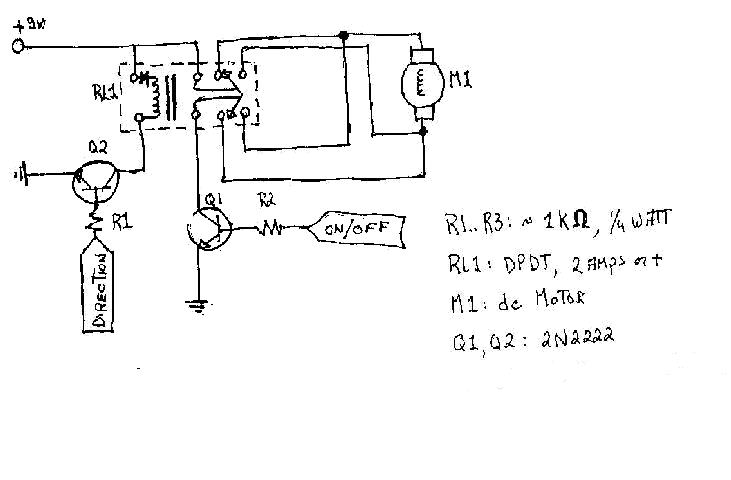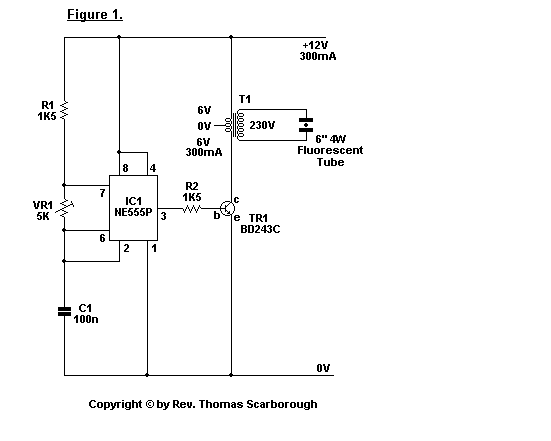
8W Fluorescent Lamp Inverter based ZTX652

This circuit is essentially an 8W inverter circuit designed to drive an 8W fluorescent lamp from a 12V power supply. It utilizes an inexpensive inverter based on a ZTX652 transistor. The inverter will operate efficiently to convert the DC voltage from the power supply to the necessary AC voltage for the fluorescent lamp.
The 8W inverter circuit is structured to facilitate the operation of a fluorescent lamp, which requires an alternating current (AC) supply to function effectively. At the core of this design is the ZTX652 transistor, which serves as a key component in the switching mechanism of the inverter. This transistor is chosen for its capability to handle sufficient current and voltage levels while providing reliable performance in the circuit.
The circuit typically includes a transformer, which is essential for stepping up the voltage from the 12V DC input to the higher voltage AC output required by the fluorescent lamp. The ZTX652 transistor operates in a switching mode, rapidly turning on and off to create a square wave output that drives the primary winding of the transformer. The secondary winding then produces the high-voltage AC needed by the lamp.
Additional components may include capacitors for filtering and stabilizing the output, resistors for biasing the transistor, and possibly a feedback mechanism to regulate the output voltage. The design emphasizes efficiency and cost-effectiveness, making it suitable for various applications where an 8W fluorescent lamp needs to be powered from a low-voltage DC source.
Safety considerations should also be taken into account, particularly regarding the high voltage generated at the output of the transformer. Proper insulation and component ratings must be adhered to in order to ensure safe operation of the inverter circuit.This circuit is basically a 8W inverter circuit. The circuit continues to be intended to drive an 8W fluorescent lamp from a 12V power supply, utilizing an cheap inverter primarily based on a ZTX652 transistor. The inverter will operate f.. 🔗 External reference
The 8W inverter circuit is structured to facilitate the operation of a fluorescent lamp, which requires an alternating current (AC) supply to function effectively. At the core of this design is the ZTX652 transistor, which serves as a key component in the switching mechanism of the inverter. This transistor is chosen for its capability to handle sufficient current and voltage levels while providing reliable performance in the circuit.
The circuit typically includes a transformer, which is essential for stepping up the voltage from the 12V DC input to the higher voltage AC output required by the fluorescent lamp. The ZTX652 transistor operates in a switching mode, rapidly turning on and off to create a square wave output that drives the primary winding of the transformer. The secondary winding then produces the high-voltage AC needed by the lamp.
Additional components may include capacitors for filtering and stabilizing the output, resistors for biasing the transistor, and possibly a feedback mechanism to regulate the output voltage. The design emphasizes efficiency and cost-effectiveness, making it suitable for various applications where an 8W fluorescent lamp needs to be powered from a low-voltage DC source.
Safety considerations should also be taken into account, particularly regarding the high voltage generated at the output of the transformer. Proper insulation and component ratings must be adhered to in order to ensure safe operation of the inverter circuit.This circuit is basically a 8W inverter circuit. The circuit continues to be intended to drive an 8W fluorescent lamp from a 12V power supply, utilizing an cheap inverter primarily based on a ZTX652 transistor. The inverter will operate f.. 🔗 External reference





